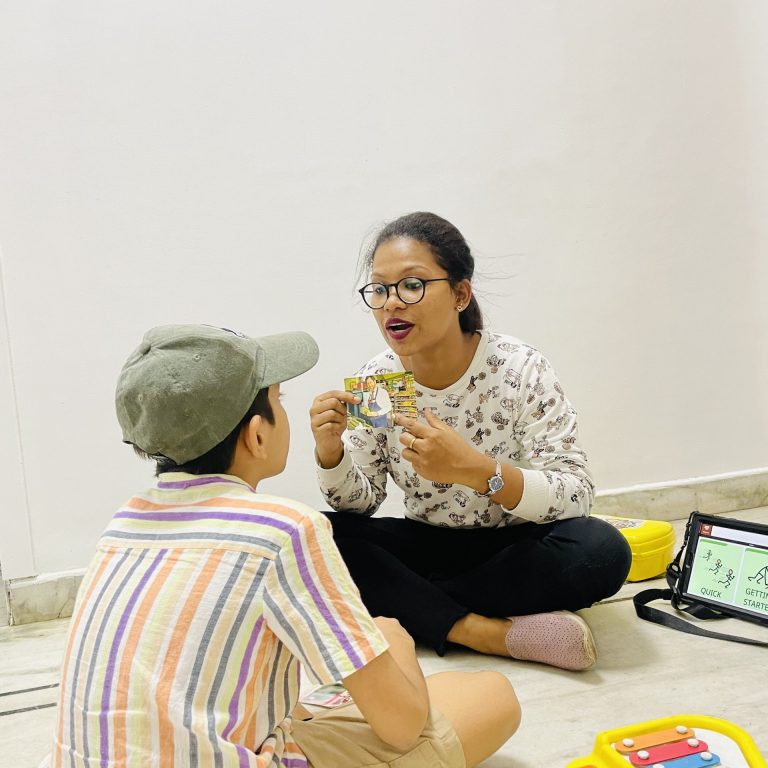A shadow teacher is additional support in classrooms for children, who works hand-in-hand with lead teachers to bridge the gap between the needs of children and the resources available within the regular classroom setting ensuring they receive essential social, physical, and educational support.
Signs Your Child Needs A Shadow Teacher
- Not participating in classroom activities
- Has difficulty communicating his/her wants and needs
- Struggling with social skills
- Lagging behind in academics


Common Diagnoses
- Receptive/Expressive Language Delay
- Articulation Disorder
- Childhood Apraxia of Speech
- Phonological disorder
- Stuttering/Fluency disorder
SLPs also frequently provide language treatment for children with:
- Autism
- Preschool Language Delays
- Learning Disabilities
Shadow Program at EAS
We evaluate and develop a holistic intervention plan based on interactive learning to support children in adapting to the classrooms.
We can support your child with:
- Adapting to the mainstream schooling environment
- Academic growth
- Developing life skills
- Building self-confidence
- Learning Social Skills



Collaborative Approach
At EAS, we have the ability to interact with an interdisciplinary team by having in-house experts in ABA Therapy, Occupational Therapy, and Speech/Language Therapy all within the same clinic. We value collaboration with caregivers, teachers, and therapists outside of EAS and realize that collaboration is essential in creating effective carry-over from home to school.
FAQ
My child has Autism, do they need Speech/Language Therapy?
Children on the autism spectrum may have a difficult time learning and using language. The autism diagnosis generally includes delays in social-emotional growth, deficits in non-verbal communication, deficits in maintaining or understanding relationships, as well as stereotypical/repetitive speech and/or echolalia. SLPs are trained to address all of these areas during your child’s therapy.
My child still has significant behaviors, are they ready for speech/language therapy or occupational therapy?
Absolutely! There are no specific expectations or behavioral criteria for your child to participate in therapeutic interventions. Our SLPs and OTs at EAS are trained to provide services for every child. The collaborative approach also helps our therapists better understand your child’s behavioral needs in order to maximize success and progress.
Do you provide Speech Language Therapy services to children who do not have an Autism Diagnosis?
Yes! We are accepting children with any diagnosis for Speech/Language and Occupational Therapy Services.
What would a speech/language therapist do to help my child learn language?
SLPs have a specific expertise in meeting your child at their current language level to help build skills through structured play therapy, modeling, and providing meaningful and rewarding opportunities for your child to learn to communicate.
ABA addresses language and communication too, how is Speech/Language therapy different?
This is correct! Building functional communication skills through positive reinforcement is a key part of the ABA program. The purpose of this is to help decrease and replace behaviors through increasing communication opportunities. SLPs take this one step further, by building a wider variety of vocabulary, social language skills, teaching alternative communication methods, and focusing on creating a language rich environment during therapy based on your child’s specific needs. SLPs teach children not only to request items or help, but to learn to understand how to comment on the environment, gain information, initiate social interaction, share personal interests, ask questions, and more.
